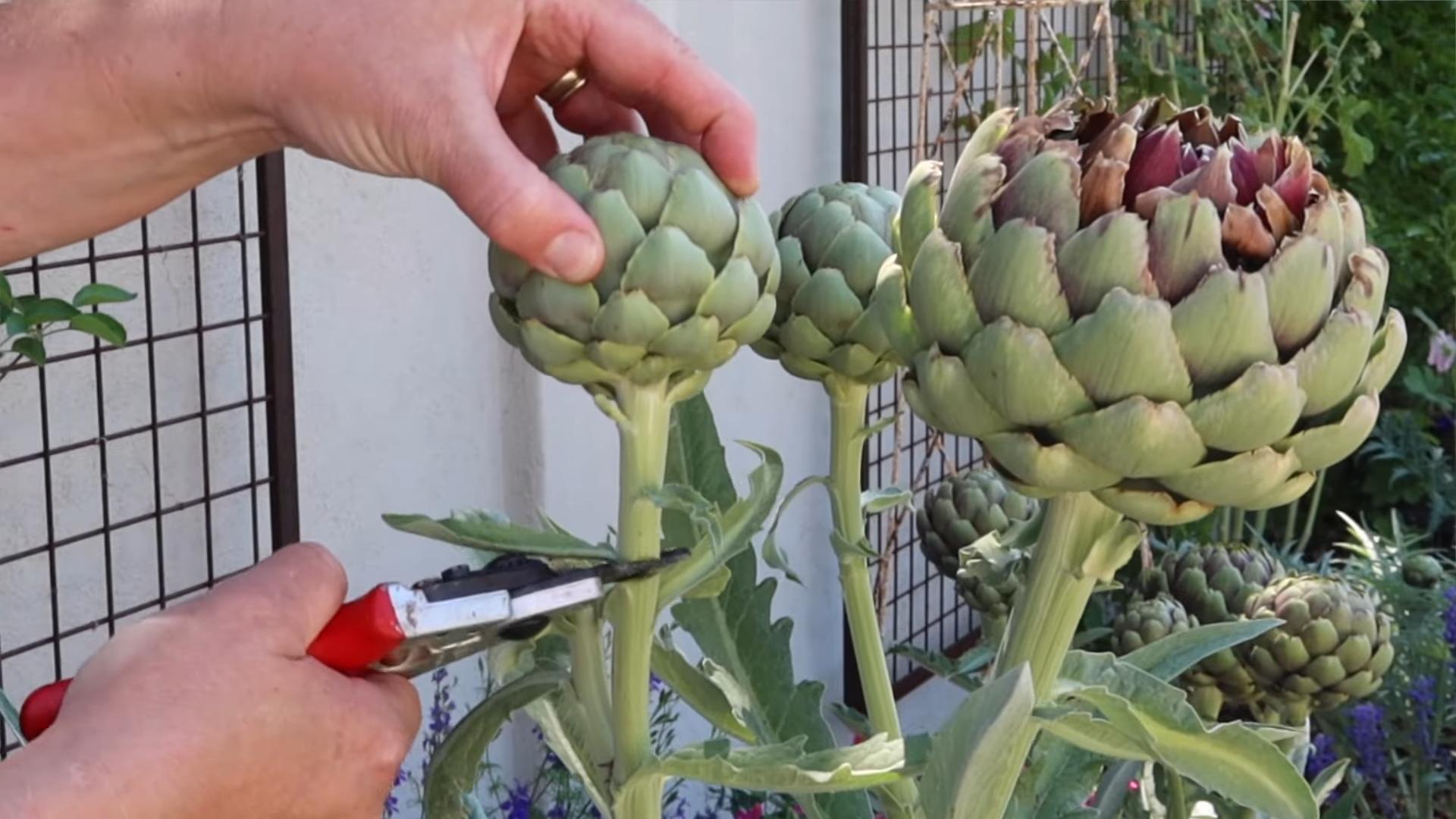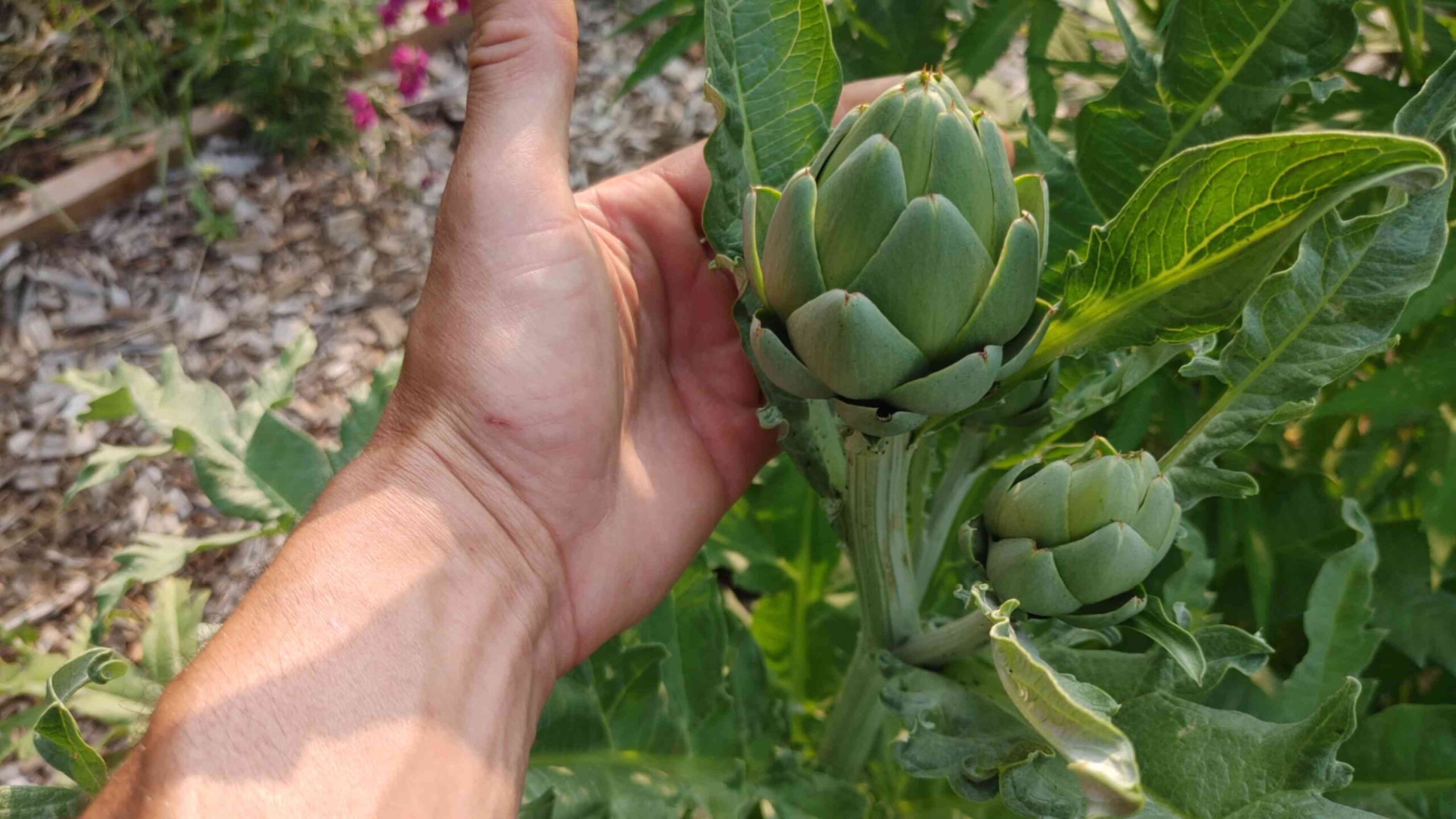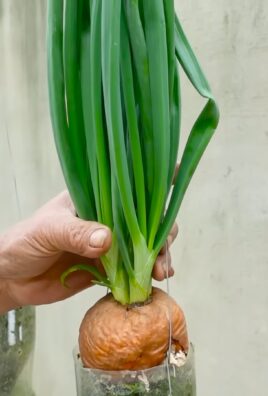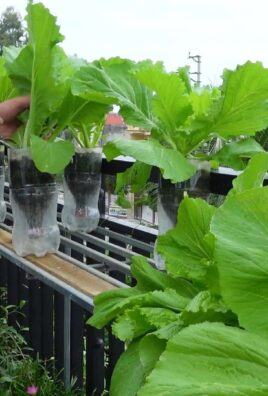Growing Artichokes at Home might seem like a challenge reserved for seasoned gardeners, but I’m here to tell you it’s totally achievable, even if you’re just starting out! Have you ever dreamt of strolling through your own backyard, plucking a perfectly plump artichoke, and then transforming it into a culinary masterpiece? Well, dream no more! This DIY guide is packed with simple tricks and hacks to help you cultivate these unique and delicious vegetables right in your own garden.
Artichokes, with their striking architectural form, have a rich history dating back to ancient times. The Romans considered them a delicacy, and they’ve been prized for their flavor and nutritional benefits ever since. But beyond their historical significance, growing artichokes at home offers a rewarding experience. Imagine the satisfaction of harvesting your own food, knowing exactly where it came from and how it was grown. Plus, fresh, homegrown artichokes taste infinitely better than anything you’ll find at the grocery store!
In today’s world, where we’re increasingly conscious of food sourcing and sustainability, learning to grow your own vegetables is more important than ever. This DIY guide will empower you to take control of your food supply, reduce your carbon footprint, and enjoy the unparalleled flavor of homegrown artichokes. So, grab your gardening gloves, and let’s get started on this exciting journey!

Growing Artichokes: A DIY Guide to Bountiful Blooms (and Delicious Hearts!)
Hey there, fellow garden enthusiasts! Ever dreamt of harvesting your own spiky, delicious artichokes right in your backyard? Well, dream no more! Growing artichokes at home is totally achievable, and I’m here to guide you through the process, step-by-step. It might seem intimidating at first, but trust me, with a little patience and the right know-how, you’ll be enjoying homegrown artichoke hearts in no time.
Choosing Your Artichoke Variety
Before we dive into the nitty-gritty, let’s talk about artichoke varieties. Not all artichokes are created equal, and some are better suited for home gardens than others. Here are a few popular choices:
* Green Globe: This is probably the most common and widely available variety. It’s known for its large, round globes and excellent flavor. It’s also relatively cold-hardy, making it a good choice for cooler climates.
* Violetta: If you’re looking for something a little different, Violetta artichokes are a beautiful purple variety. They’re smaller than Green Globes but have a delicate, slightly sweeter flavor.
* Imperial Star: This is a relatively new variety that’s known for its early maturity. It’s a good choice if you live in an area with a shorter growing season.
* Big Heart: As the name suggests, this variety produces large artichokes with a high percentage of edible heart.
I personally love growing Green Globes because they’re reliable and produce consistently delicious artichokes. But feel free to experiment and find the variety that works best for you and your climate!
Getting Started: From Seed or Transplant?
You have two main options for starting your artichoke plants: from seed or from transplants.
* Starting from Seed: This is the more economical option, but it requires more time and effort. Artichokes started from seed often don’t produce edible globes until their second year.
* Starting from Transplants: This is the faster and easier option. You can purchase established artichoke plants from your local nursery or garden center. Transplants will typically produce artichokes in their first year.
For beginners, I highly recommend starting with transplants. It’s a much quicker way to get your artichoke garden up and running.
Step-by-Step Guide: Planting Your Artichokes
Okay, let’s get our hands dirty! Here’s a detailed guide to planting your artichokes:
1. Choose the Right Location: Artichokes need plenty of sunlight – at least 6-8 hours per day. They also need well-drained soil. Avoid planting them in areas where water tends to pool.
2. Prepare the Soil: Artichokes are heavy feeders, so it’s important to amend the soil with plenty of organic matter. Dig in compost, well-rotted manure, or other organic amendments before planting. I usually add a generous amount of compost to my artichoke beds.
3. Dig the Planting Holes: Dig holes that are slightly larger than the root balls of your transplants. Space the holes about 3-4 feet apart. Artichokes can get quite large, so they need plenty of room to grow.
4. Carefully Remove the Transplants from Their Containers: Gently loosen the root ball before planting. If the roots are tightly bound, you can carefully tease them apart.
5. Plant the Transplants: Place the transplants in the holes, making sure that the top of the root ball is level with the surrounding soil.
6. Backfill the Holes: Fill the holes with soil and gently firm it around the plants.
7. Water Thoroughly: Water the newly planted artichokes deeply. This will help to settle the soil and encourage root growth.
8. Mulch Around the Plants: Apply a layer of mulch around the plants to help retain moisture, suppress weeds, and regulate soil temperature. I like to use straw or wood chips for mulch.
Caring for Your Artichokes: Watering, Fertilizing, and Pruning
Once your artichokes are planted, it’s important to provide them with the proper care to ensure healthy growth and abundant harvests.
Watering
Artichokes need consistent moisture, especially during hot, dry weather. Water them deeply whenever the top inch of soil feels dry to the touch. Avoid overwatering, as this can lead to root rot. I usually water my artichokes every 2-3 days during the summer months.
Fertilizing
Artichokes are heavy feeders, so they need regular fertilization. Apply a balanced fertilizer every 4-6 weeks during the growing season. You can also side-dress them with compost or well-rotted manure. I like to use a fertilizer that’s specifically formulated for vegetables.
Pruning
Pruning is an important part of artichoke care. Here’s what you need to know:
* Remove Suckers: Artichokes produce suckers, which are small shoots that grow from the base of the plant. These suckers can drain energy from the main plant, so it’s important to remove them regularly. Simply cut them off at the base of the plant.
* Deadhead Spent Blooms: After the artichokes have been harvested, the plant will produce flowers. These flowers are beautiful, but they will also drain energy from the plant. To encourage further artichoke production, deadhead the spent blooms by cutting them off at the base of the stem.
* Cut Back in Fall: In colder climates, you’ll need to cut back your artichoke plants in the fall to protect them from frost. Cut the plants back to about 6-8 inches above the ground and cover them with a thick layer of mulch.
Dealing with Pests and Diseases
Artichokes are relatively pest-resistant, but they can be susceptible to a few common problems:
* Aphids: These tiny insects can suck the sap from artichoke leaves, causing them to curl and distort. You can control aphids by spraying them with insecticidal soap or neem oil.
* Slugs and Snails: These pests can damage artichoke leaves and buds. You can control them by hand-picking them off the plants or by using slug bait.
* Artichoke Plume Moth: The larvae of this moth can bore into artichoke buds, causing them to rot. You can control artichoke plume moth by using pheromone traps or by spraying the plants with an insecticide.
* Root Rot: This fungal disease can occur in poorly drained soil. To prevent root rot, make sure your artichokes are planted in well-drained soil and avoid overwatering.
I’ve found that regular monitoring and early intervention are key to preventing serious pest and disease problems in my artichoke garden.
Harvesting Your Artichokes: When and How
The moment you’ve been waiting for! Harvesting your own artichokes is incredibly rewarding. Here’s how to do it:
1. When to Harvest: Artichokes are ready to harvest when the buds are firm and plump, and the scales are still tightly closed. The size of the artichoke will vary depending on the variety, but generally, you should harvest them when they’re about 3-4 inches in diameter.
2. How to Harvest: Use a sharp knife to cut the artichoke stem about 2-3 inches below the base of the bud.
3. Enjoy Your Harvest: Artichokes are delicious steamed, grilled, or baked. You can also use the hearts in salads, dips, and other dishes.
I love to steam my artichokes and dip them in melted butter or aioli. It’s the perfect way to enjoy the fruits (or rather, the buds!) of my labor.
Overwintering Artichokes in Cold Climates
If you live in a cold climate, you’ll need to take steps to protect your artichoke plants from frost during the winter. Here’s what I do:
1. Cut Back the Plants: In the fall, cut back the plants to about 6-8 inches above the ground.
2. Mulch Heavily: Cover the plants with a thick layer of mulch, such as straw or leaves. This will help to insulate the roots and protect them from freezing.
3. Consider a Cold Frame: For extra protection, you can build a cold frame over your artichoke plants. This will provide a warmer, more sheltered environment.
With proper care, your artichoke plants should survive the winter and produce even more artichokes the following year.
Troubleshooting: Common Artichoke Growing Problems
Even with the best care, you might encounter some problems while growing artichokes. Here are a few common issues and how to address them:
* Artichokes Not Producing Buds: This can be caused by a number of factors, including insufficient sunlight, poor soil, or lack of fertilization. Make sure your artichokes are getting enough sunlight, amend the soil with organic matter, and fertilize them regularly.
* Artichoke Buds

Conclusion
So, there you have it! Growing artichokes at home might seem daunting at first, but with a little patience, the right conditions, and this straightforward guide, you’ll be harvesting your own delicious, spiky treasures in no time. We’ve covered everything from selecting the right variety for your climate to nurturing your plants through the seasons and protecting them from pests.
Why is this DIY approach a must-try? Because nothing beats the satisfaction of enjoying a vegetable you’ve cultivated yourself. The flavor of a homegrown artichoke, freshly steamed and dipped in garlic butter, is simply unparalleled. Plus, you’ll know exactly where your food comes from and how it was grown, avoiding the pesticides and long-distance transportation often associated with store-bought produce. You’ll also be contributing to a more sustainable lifestyle and potentially saving money in the long run.
Beyond the basic steps, there’s plenty of room for experimentation. Consider companion planting with herbs like rosemary, thyme, or sage to deter pests and enhance the flavor of your artichokes. You could also try different mulching techniques to conserve moisture and suppress weeds. For those in colder climates, explore overwintering methods like covering your plants with straw or burlap to protect them from frost. Another variation is to try growing different varieties of artichokes. ‘Green Globe’ is a classic, but ‘Violetta’ offers a beautiful purple hue and a slightly sweeter taste. ‘Imperial Star’ is a good choice for warmer regions.
Growing artichokes at home is not just about the food; it’s about the experience. It’s about connecting with nature, learning about the growing process, and enjoying the fruits (or rather, the vegetables) of your labor. It’s a rewarding hobby that can bring joy and deliciousness to your life.
We wholeheartedly encourage you to give this DIY trick a try. Don’t be afraid to get your hands dirty and embrace the challenges along the way. Remember to document your progress, take pictures, and share your experiences with us! We’d love to hear about your successes, your struggles, and any tips or tricks you discover along the way. Share your photos and stories on our social media pages using #HomegrownArtichokes. Let’s build a community of artichoke enthusiasts and inspire others to embark on this rewarding journey. Happy growing!
Frequently Asked Questions (FAQ)
What is the best time of year to plant artichokes?
The ideal time to plant artichokes depends on your climate. In regions with mild winters (zones 7-10), you can plant artichokes in the fall for a spring harvest. In colder climates (zones 6 and below), it’s best to start seeds indoors 8-10 weeks before the last expected frost and transplant them outdoors in the spring after the danger of frost has passed. This gives the plants enough time to establish themselves before winter.
How much space do artichoke plants need?
Artichoke plants can grow quite large, reaching up to 3-4 feet in height and width. Therefore, it’s essential to provide them with ample space to thrive. A good rule of thumb is to space artichoke plants at least 4 feet apart in rows that are 6-8 feet apart. This allows for proper air circulation and sunlight penetration, which are crucial for healthy growth and abundant yields.
What kind of soil is best for growing artichokes?
Artichokes prefer well-drained, fertile soil that is rich in organic matter. The ideal soil pH is between 6.0 and 7.0. Before planting, amend your soil with compost, aged manure, or other organic materials to improve its drainage, fertility, and water-holding capacity. If your soil is heavy clay, consider adding sand or perlite to improve drainage.
How often should I water my artichoke plants?
Artichokes require consistent moisture, especially during the growing season. Water deeply and regularly, aiming to keep the soil consistently moist but not waterlogged. The frequency of watering will depend on your climate, soil type, and rainfall. In general, water your artichoke plants 1-2 times per week, or more often during hot, dry weather. Use a soaker hose or drip irrigation to deliver water directly to the roots, avoiding wetting the foliage, which can increase the risk of fungal diseases.
How do I fertilize my artichoke plants?
Artichokes are heavy feeders and benefit from regular fertilization. Apply a balanced fertilizer (e.g., 10-10-10) at planting time and then side-dress with compost or aged manure every few weeks during the growing season. You can also use a liquid fertilizer, such as fish emulsion or seaweed extract, to provide a boost of nutrients. Avoid over-fertilizing, as this can lead to excessive foliage growth at the expense of flower production.
How do I protect my artichoke plants from pests and diseases?
Artichokes are susceptible to several pests and diseases, including aphids, snails, slugs, and powdery mildew. To prevent pest problems, inspect your plants regularly and remove any pests by hand. You can also use insecticidal soap or neem oil to control aphids and other soft-bodied insects. To protect against snails and slugs, use copper tape, beer traps, or diatomaceous earth. To prevent powdery mildew, ensure good air circulation around your plants and avoid overhead watering. If powdery mildew does occur, treat it with a fungicide.
When are artichokes ready to harvest?
Artichokes are typically ready to harvest in the spring or early summer, depending on the variety and your climate. The buds are ready to harvest when they are plump, firm, and have tightly closed scales. The size of the bud will vary depending on the variety, but a good rule of thumb is to harvest when the bud is about 3-4 inches in diameter. To harvest, cut the stem about 2-3 inches below the base of the bud using a sharp knife.
Can I grow artichokes in containers?
Yes, you can grow artichokes in containers, but you’ll need to choose a large container (at least 20 gallons) to accommodate their extensive root system. Use a well-draining potting mix and provide regular watering and fertilization. Container-grown artichokes may require more frequent watering and fertilization than those grown in the ground. Also, be sure to protect container-grown artichokes from frost in colder climates.
How do I overwinter artichoke plants in cold climates?
In regions with cold winters, artichokes need protection to survive. After the first frost, cut back the foliage to about 6 inches above the ground. Cover the plants with a thick layer of mulch, such as straw, leaves, or pine needles. You can also wrap the plants with burlap or frost cloth for added protection. In extremely cold climates, you may need to dig up the plants and store them in a cool, dark place over the winter, replanting them in the spring.
My artichoke plant produced buds the first year, is that normal?
While artichokes are technically perennials, they often don’t produce buds until their second year, especially when grown from seed. If your plant produced buds in its first year, consider yourself lucky! This can happen with certain varieties or under ideal growing conditions. However, even if your plant doesn’t produce buds in its first year, don’t give up on it. With proper care, it should produce a bountiful harvest in the following years.





Leave a Comment